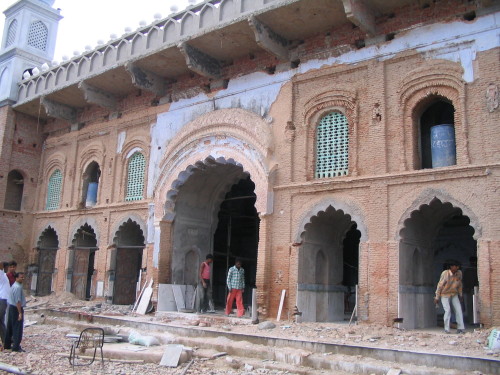
Dr.Mazhar Naqvi
Shah Chiragh, a popular Imami shrine of
Shiraz(Iran) should not only be viewed as the last resting place of two sons of
Imam Musa Kazim. Rather, it should also be perceived as a mausoleum with
horrifying tales of persecution of Prophet Hazrat Muhammad’s progeny by Abbasid
Caliphs. History reveals that sons of the seventh Imam namely Ahmad and
Muhammad had taken refuge in Shiraz following persecution from the Abbasid
regime.
Shah Chiragh means ‘King of the Light’. The
shrine owes its name due to its miraculous discovery by Ayatollah Dastghaib. He
used to see light emanating from a distance from his house. He decided to find
the course of the light. Upon investigation. Ayatollah found the light
originating from a grave within an old graveyard. He got the grave excavated and a body wearing an armor was discovered. A
ring was also found with words ’al- Izzatu lillah,Ahmad bin Musa written on it(Pride belongs to God ,Ahmad son
of Musa). The ring confirmed the body as that of Ahmad, one of the sons of Imam
Musa Kazim. Thereafter, the place began earning popularity as the last resting
place of Imam’s sons who had migrated to Iran due to their persecution. It is
believed that Ahmad had come to Shiraz around 900 AD and breathed his last
there.
The Chief Minister of Zengid dynasty,
Atabeg Abu Saeed Zangi built the shrine with a dome ,tomb chamber and colonnaded
porch around 1130 AD.In 14th century, Queen Tashi Khatun erected a
mosque and established a Madarsa(Theological school) in the vicinity of the
shrine. She also carried out essential
repairs, constructed an edifice, a hall of audience and a tomb for herself on the south side. Queen
also presented a unique Quran in 30
volumes written in golden ‘thuluth’ characters
with gold decoration, in the calligraphic
style of that era. The mosque again underwent necessary repairs in 1506 and in 1588
AD. In 19th century, the shrine was damaged several times and was repaired.
Nasir- Ul- Mulk once got the dome repaired but it had to be replaced with a new
one in 1958 after it developed several cracks. People of Shiraz extended
financial support to the endeavor. The decorative work in a mosaic of mirror
glass, the inscriptions in stucco, the ornamentation, the doors covered with
panels of silver, the portico, and the wide courtyard are most attractive make
the present building much attractive. The shrine also figures n the list of
national monuments of Iran and is frequented by visitors in large number.(References available on request.Photo Courtesy-Google Images )












